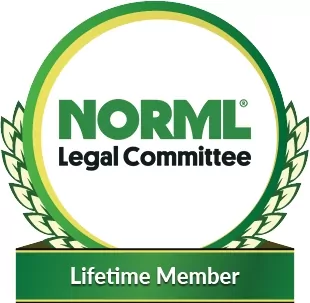CBP Seizures for Forfeitures
U.S. Customs and Border Protection (CBP) handles administrative forfeitures after property is seized for violations of customs laws and other laws enforced by CBP. In addition to seizures by CBP agents, CBP also processes seizures on behalf of U.S. Immigration and Customs Enforcement (ICE) and Homeland Security Investigations (HSI).
Seizures of cash by CBP or HSI agents are common at airports, train stations, bus depots, and along major highways. In 2019 alone, CBP initiated more than 22,000 forfeiture actions. On average in 2022, agents seized over $200,000 per day in unreported or allegedly illicit currency.
Immediately after the property is seized, a receipt should be provided to the person from whom the property was seized and confiscated. After that, CBP has 60 days to send a letter to any potential claimant that contains a “Notice of Seizure and Intent to Forfeit.” If a state or local law enforcement agency seizes the property and CBP later adopts the forfeiture, it has 90 days to issue the notice of seizure.
Beginning in May 2023, CBP began publishing the Notice of Seizure and Intent to Forfeit on the www.forfeiture.gov website for at least 30 consecutive days, as required by 19 CFR 162.45(b), at the same time the personal notice is issued. CBP also posts the notice at the appropriate U.S. Customs House, U.S. Border Patrol Station, or Sector office when needed.
The notice of seizure gives you three options:
- do nothing, which allows CBP to take your property forever without a fight;
- file a petition for remission or mitigation so CBP decides what happens to your property during an administrative proceeding;
- opt out of the administrative proceeding by filing a claim for court action so that CBP no longer gets to decide.
Filing the claim for court action triggers a 90-day deadline for CBP to either return the property or file a complaint for forfeiture in the U.S. District Court.
Attorney for CBP Forfeiture Proceedings
Our attorneys have represented travelers in Florida and across the country after CBP or HSI agents seized more than $10,000 in U.S. currency. These cases often start with an airport encounter but may also occur on buses, trains, or roadways. CBP might obtain a seizure warrant to take cash from a bank account or cryptorcurrency from a cryptocurrency account or wallet.
An attorney can fight for the return of your property and any interest owed.
Filing a petition for remission or mitigation rarely succeeds. The stronger route is to file a verified claim that compels the government to either return the property or file a complaint for forfeiture in federal court. That demand triggers a 90-day deadline and puts the burden back on the government.
Call 813-250-0500.
What Property is Eligible for CBP Administrative Forfeitures?
CBP administratively forfeits property if the seized property meets certain conditions, as explained in 19 U.S.C. 1607. The following types of seized property are typically eligible for administrative forfeiture:
- a conveyance used to unlawfully import, export, transport, or store a controlled substance or prohibited chemical;
- merchandise prohibited from being imported or exported;
- a monetary instruments defined by 31 U.S.C. 5312(a)(3); or
- other property that does not exceed $500,000 in value.
If the seized property is not eligible for an administrative forfeiture process, CBP will refer the case for judicial forfeiture as required by 19 U.S.C. 1610; 19 CFR 162.32(c).
The procedures for administrative forfeiture are explained in the following two statutes:
- Section 2 of the Civil Asset Forfeiture Reform Act of 2000 (CAFRA) (Pub. L. 106-185, 114 Stat. 202), codified at 18 U.S.C. 983.;
- 19 CFR part 162, subpart H (CBP regulations implementing CAFRA as it applies to seizures made by CBP).
- CAFRA does not apply, however, to all CBP seizures.[2]
For non-CAFRA seizures, the procedures for seizure and forfeiture fall under the following:
- the Tariff Act of 1930, as amended (codified at 19 U.S.C. 1600, et seq.); and
- CBP’s regulations are found in 19 CFR parts 162 and 171.
How to Respond to CBP’s Notice of Seizure
As required by 19 CFR 162.31, 162.92, CBP initiates the administrative forfeiture process by mailing a Notice of Seizure to any party it identifies as potentially having an interest in the property. The Notice of Seizure explains options for a claimant, including:
- filing a claim;
- filing a petition for remission;
- filing a petition for mitigation; or
- making an offer in compromise.
If a claimant did not receive a personal notice of seizure, the party can still file a claim within 30 calendar days after the date of final publication of the Notice of Seizure and Intent to Forfeit, as explained in 19 CFR 162.94(b).
For non-CAFRA seizures, the party must file a claim within 20 days from the date of the first publication of the Notice of Seizure and Intent to Forfeit and must include a cash bond, unless CBP has waived the bond requirement as explained in 19 U.S.C. 1608 and 19 CFR 162.47.
If no claimant files a claim and CBP denies any petition or offer in compromise, CBP executes a Declaration of Administrative Forfeiture declaring the property forfeited and transferring full title of the forfeited property to CBP.
Carrying More Than $10,000 in Cash
Travelers carrying more than $10,000 on an international flight must declare it using the FinCEN 105 form. Failure to disclose can result in seizure. After property is taken, CBP generally has 60 days to mail a Notice of Seizure. The CBP notice letter explains the government’s basis for forfeiture and includes a claim form with a strict 35-day filing deadline. Importantly, you do not have to wait on the letter. Instead, an attorney can help you file a verified claim immediately to speed up the process.
Common Airports for Currency Seizures
CBP and HSI seize millions of dollars each year from travelers at some of the busiest U.S. airports, including Tampa, Orlando, Miami, Atlanta, Los Angeles, Chicago, Dallas/Fort Worth, New York (JFK and Newark), San Francisco, Seattle, and Houston. Cash is the most frequent target, but federal agents also seize vehicles, firearms, gold, and other assets.
What Happens After CBP Agrees to Release Funds
If the U.S. Attorney declines to pursue a forfeiture complaint, CBP will notify your attorney that the property will be released. Refunds are processed through the National Finance Center, and while CAFRA requires prompt return, payments often take several weeks. Claimants can usually choose between direct deposit or paper check once CBP finalizes the release.
Detentions of Goods and Merchandise
CBP also detains commercial goods for suspected violations involving labeling, classification, intellectual property rights, or compliance with other federal agencies. If unresolved, a detention can become a seizure case. Importers then have the right to file a claim in federal court to challenge the action and seek prompt return of their merchandise.







